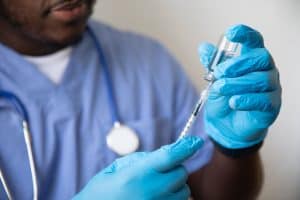
FDA-approved drugs in combination could provide new antibiotics
pharmafile | June 21, 2017 | News story | Research and Development | Antibiotics, FDA, antibiotic resistance
Research emerging from the University of Utah Health has built on knowledge that drugs used in combination can be more effective than used alone, as bacteria develop antibiotic resistance, to develop an effective way of pairing drugs. In particular, the researchers identified potential new drug matches by screening pairs of drugs that have already been approved by the FDA.
The team analysed a dataset of 4,000 E.coli mutants that were developed in the presence of 100 FDA-approved drugs. The mutants bacteria each had a specific gene missing and reacted to whichever drug it was grown alongside uniquely. Researchers were then able to produce a dataset with the various chemical genetic signatures produced from the interactions, particularly the susceptibilities of the bacteria to different drugs.
Once this database of weaknesses was compiled, it allowed the team to predict which combinations of drugs would be able to most effectively target the E.coli.
The researchers found two drugs, when used in combination, were particularly effective against trimethoprim-resistant E. coli – azidothymidine and fluxuridine. Azidothymidine is an antiretroviral medication that is used to treat HIV and AIDS while fluxuridine is actually a cancer drug commonly used in patients with kidney or stomach cancer.
Fluxuridine has a similar chemical genetic signature to trimethoprim, an antibiotic that bacteria is rapidly becoming resistant to, and it is thought that this may be the reason behind its efficacy at reducing bacterial load. The two drugs in combination were found to reduce the bacterial load by 10,000-fold compared to treatment with the traditional antibiotic pairing of trimethoprim and sulfamethizole.
The action and reason for this efficacy is because azidothymidine blocks DNA replication, as fluxuridine stops the bacteria from repairing their DNA. Due to the novel way the drugs work, bacteria have not had change to build up a resistance to their action – making them particularly effective.
“By pairing FDA-approved drugs synergistically, we have the potential to take these pairs to clinic much more quickly than new drugs, which can be expensive and time intensive to create and approve,” Jessica Brown, Assistant Professor in pathology at U of U Health.
As Brown mentions, if the research can be pushed beyond the zebrafish studies that found these results and into clinical trials – it could quickly become an available treatment due to the backlog of safety information about these previously FDA-approved drugs.
Ben Hargreaves
Related Content

Roche’s Alecensa approved by FDA as lung cancer treatment
Roche has announced that the US Food and Drug Administration (FDA) has approved Alecensa (alectinib) …

GSK’s meningococcal vaccine candidate accepted for FDA review
GSK has announced that the US Food and Drug Administration (FDA) has accepted for review …

FDA grants ODD to Candel Therapeutics’ pancreatic cancer treatment
Candel Therapeutics has announced that the US Food and Drug Administration (FDA) has granted Orphan …







